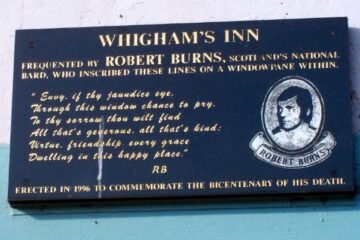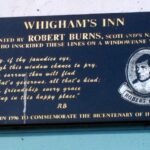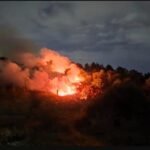EDINBURGH, Scotland — Scotland observed a solemn Armistice Day on November 11, with communities across the nation holding ceremonies to remember those who have died in conflicts worldwide. As the clock struck 11:00 a.m., Scots marked the traditional two-minute silence to honour those lost, continuing a tradition that began with the signing of the armistice in 1918.
This year’s commemoration featured touching displays of remembrance, heartfelt ceremonies, and tributes across the country, from Edinburgh’s iconic Scott Monument to Shetland’s Anderson High School.
Remembrance at Iconic Scottish Landmarks
In Edinburgh, a poignant scene unfolded as veterans gathered in front of the Scott Monument, surrounded by wreaths of poppies and crosses. Edinburgh Castle stood in the background as a reminder of Scotland’s rich military history, providing a fitting backdrop for the occasion.
Similarly, St Magnus Cathedral in Kirkwall, Orkney—Scotland’s oldest cathedral—became a focal point for remembrance as flagbearers, veterans, and members of the public joined to observe the silence. The cathedral, dating back to the 12th century, holds the names of those who did not return from World War I, serving as a powerful reminder of Scotland’s sacrifices.

Community Displays and School Involvement
Across Scotland, communities found creative ways to honour the fallen. In Shetland, the cairn outside Anderson High School in Lerwick was adorned with handmade poppies, knitted and crocheted by students, knitters, and community members. This display commemorated the 49 former students who lost their lives in World War I and around 20 who died in World War II.
Historic Environment Scotland (HES) took the opportunity to engage younger generations in remembrance. Working with local schools, they encouraged children to create poppies to display at historic sites such as Dryburgh Abbey in the Scottish Borders. Through this project, students learned about the remembrance poppy’s origins, including the efforts of Anna Guérin, who pioneered the poppy as a symbol of remembrance, and Lady Haig, who established Scotland’s first poppy factory to support veterans and their families.
Bagpipes, Laments, and Processions
The familiar sound of bagpipes added a unique touch to Armistice Day events across the country. In Glasgow, a piper led a procession of veterans through the bustling concourse of Central Station, with travellers pausing to pay their respects.
In Aberdeen, an Armistice Day service was held at the Gordon Highlanders Museum. Eleven-year-old piper Andrew Fagan, dressed in Highland attire, performed the traditional Scottish lament “Flowers of the Forest” following the two-minute silence. Fagan, who also played in the King’s Coronation procession, shared his pride in participating: “It was a privilege to play here,” he told BBC Scotland.
Leaders and Dignitaries Join Remembrance Ceremonies
Scotland’s political leaders joined citizens in ceremonies across the UK. First Minister John Swinney laid a wreath at Edinburgh’s Stone of Remembrance, located outside the City Chambers, commemorating the lives lost during the World Wars. Speaking at the event, Swinney acknowledged the sacrifices of those who “paid the ultimate price” to protect the freedoms enjoyed today.
SNP Westminster leader Stephen Flynn joined other UK party leaders and former prime ministers at the Cenotaph in London. Members of the British royal family, including King Charles and the Prince and Princess of Wales, attended the ceremony, reaffirming the nation’s commitment to honouring those who served.

















